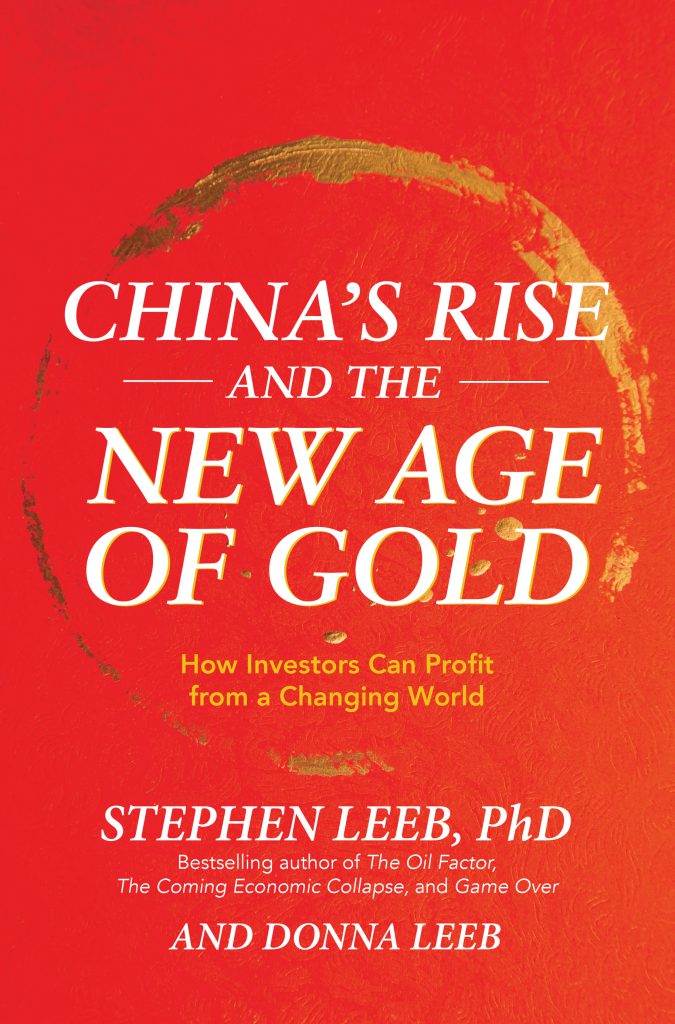It seems a universal desire of parents everywhere to give their children the best possible education. Parents recognize that education is foundational to having an opportunity to lead a fulfilling and financially secure life.
Education also is foundational to the economy, and never more so than today, when industries of all kinds need a skilled, educated workforce to produce the more technologically advanced products that populate our world.
And finally, as our founding fathers knew, education is foundational to our democracy. Thomas Jefferson believed that only educated citizens could make the grand experiment of democracy succeed. In addition to founding the University of Virginia, he advocated for what was then the radical idea of free public education, which eventually became established throughout the country.
But the opposite also is true: If a good education is foundational to a country’s success, an inadequate educational system can eat away at a country’s greatness. And unfortunately, that has been happening here in recent decades, as measured by national and international tests that reveal U.S. students losing ground, while companies struggle to find workers able to master essential jobs.
Reversing this decline is one of the most urgent challenges the U.S. faces. It’s delusional to think we can be leaders in the industries that are most important to today’s and tomorrow’s world, from advanced semiconductors to rare earth refining, without the skilled workers they require. Meanwhile, though, the situation has spawned investment opportunities, as some companies are finding success in offering educational alternatives. One particularly interesting example joins Growth Portfolio this month. We review it in the accompanying ‘Stock Recommendations’ article, along with a second company that we will be keeping on our radar as a potential future recommendation. Alternative and vocational education is an investment area that, while not flashy, meets a compelling need, and the best-placed companies should produce solid results.
Evidence of decline
What’s the evidence that our educational system is failing to prepare students for life after school, with widespread repercussions to the economy and our ability to compete? One strong sign is the low and declining scores of NAEP math proficiency tests, which are administered to samplings of eighth graders around the country. Math proficiency is the test that relates most closely to the skills needed in today’s workplace. In 2022, just 26% of the students tested performed at or above a level considered proficient. This was 7 percentage points lower than the already dismally low 33% in 2019.
I was further horrified when I looked more closely at the tests and found glaring errors in some of the questions themselves. For example, a function was mis-defined; there was a mistake in the logic of how a question was phrased; and in one case, an outright wrong answer was presented as correct. If the test designers themselves make these kinds of mistakes, you know there’s a problem.
If we have any hope of fixing it, we need to start by understanding just where we went wrong. Various factors have played a role. In my book China’s Rise and the New Age of Gold, I looked at how the flood of money that was unleashed once we went off the gold standard in 1971 undermined education – as well as health care and other aspects of American life – by eliminating the need to make disciplined choices on how best to use our resources. With respect to the school system, it enabled the growth of a large bureaucratic overhang at the expense of genuine learning.
But here I want to look at another factor afflicting U.S. education: the fact that it has become ever more based on the branch of psychology known as behaviorism. This is a view of human beings as behavioral machines who learn by responding to particular stimuli. As behaviorism has permeated U.S. education, students at all educational levels have become essentially stimulus-response machines. Moreover, it’s a dynamic that has infected multiple areas of U.S. life.
A deliberate dumbing down
Behaviorism, whose best-known proponent here is B.F. Skinner, is the antithesis of freedom of thought and mind, which was the spiritual value our founding fathers viewed as most essential to unleashing American greatness. For more than two centuries, they were proved right, as the U.S. became the great nation that we were for so long. But in the past 50 years, as our educational system became imbued with the philosophy of behaviorism, freedom of thought has been downgraded, allowing us to be eclipsed by countries we used to tower over.
The most comprehensive discussion of behaviorism in relation to U.S. education is found in the book The Deliberate Dumbing Down of America (1999), written by Charlotte Thomson Iserbyt, a policy adviser to the U.S. Department of Education. Iserbyt links the introduction of behaviorist methodologies in schools to lowered academic standards and achievement, as well as the decline of critical thinking, and discusses the political agenda that lies behind it. A quote from the introduction to the book, written by the theologian Francis Schaeffer, conveys some of that message. Schaeffer wrote: “Within the Skinnerian system, there are no ethical controls; there is no boundary limit to what can be done by the elite in whose hands control resides.”
The pernicious effects of the acceptance of Skinner’s ideas on education started to become apparent in the mid-1960s, when SAT scores began a dramatic decline. Between 1965 and 1980, the average math score fell by more than 50 points. Sometime in the 1980s, a number of renormalizations of the test took place, and average scores climbed back to nearly pre-1965 averages. What does renormalization mean? In a classroom setting, renormalization would be assigning a grade of, say B, to what previously would have been a C.
In other words, today’s students are being held to lower standards than in previous generations, with the stimulus/response model replacing encouragement of critical thinking. And I would argue that the ramifications extend to our democracy itself. Consider the following scenario: A top CIA operative, representing the elite, puts together a list of viewpoints—i.e., stimuli—for the U.S. public to respond to. He introduces them to a group of top journalists, who report them (stimuli) in the country’s leading media outlets. People reading the reports or watching the news respond to the stimuli as expected, approving what turn out to be senseless wars, from Vietnam to Iraq to Afghanistan to Ukraine.
B.F. Skinner stands in stark contrast to William James, considered by many to be the founder of American psychology. While Skinner based his work largely on studies with animals, including pigeons and rats, James grounded his work in the full range of human experience. James believed in functionalism, which stresses how people use mental processes to help adapt to their environment; Skinner’s behaviorism excluded mental processes as an explanation for behavior. It seems clear that James’s views align far more closely with what Jefferson believed about education, and it’s a shame that it has been Skinner’s approach that prevailed.
We should be demanding more from our students, and more from ourselves. Any pushback that helps give today’s students the tools to think for themselves and function in the world are welcome, and alternative education companies, like the one we recommend this issue, can contribute to that effort if just in a small way, benefiting the country along with investors.
Take Your Investment Strategy to the Next Level
Affordable. Essential. By joining Turbulent Times Investor, you’ll gain full access to 75 Stocks in the Core Investment Portfolio recommendations… Updates delivered directly to your inbox throughout the month… Instant buy/sell alerts.
Join now for just $10 per month
Most investors have yet to grasp the extent to which the world is changing and the profound impact this will have on the financial markets. The global stock markets are rapidly approaching an era of unprecedented turbulence. Investors face enormous risks—but also some great opportunities, which we highlight and monitor in our Core Investment Portfolios. Don’t miss out—join now to stay in the loop.
























